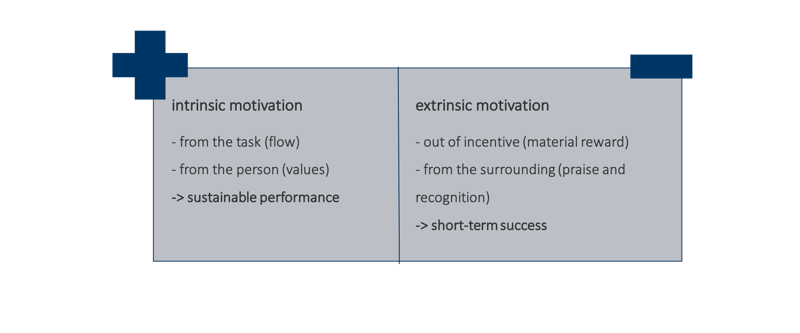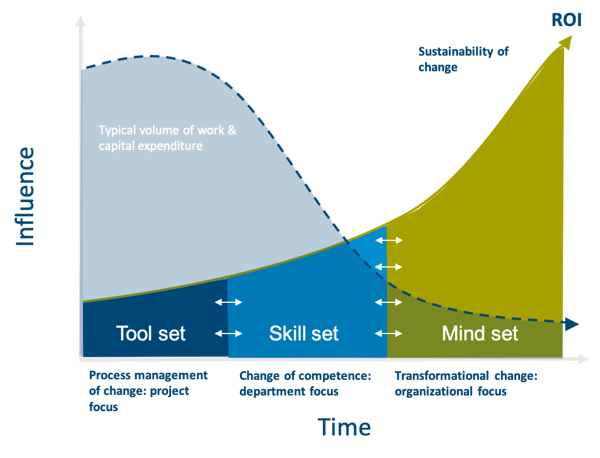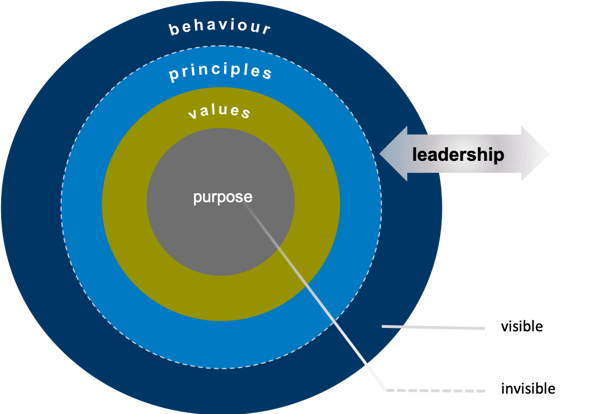New working environments (5) - room and company culture
In the fifth part of the series New Working Environments, we look at community culture, an essential honeycomb in a healthy organisation, and consider what influences the environment has on the culture in a company and why it is so important to develop it to ensure healthy growth and human interaction.
In the famous quote Peter Drucker once said: "Culture eats strategy for breakfast". What does that mean? Why is corporate culture so important for New Work to succeed, especially in today's VUCA world?
Corporate culture is the result of mutual interdependence of the dimensions of a healthy organisation. Strategies, processes and last but not least the structures in the company have an effect on culture - it is the result of these interdependent dimensions. So culture cannot be managed - it cannot be controlled like a trivial machine. It is the result of a complex process within a social system.
Values and principles as central elements of a community culture
Many companies in Germany are stuck in encrusted structures. Innovation and agility therefore fall by the wayside. To change this, a change in minds is needed. With intrinsically motivated employees, organizations can sustainably survive in the market and secure a long-term competitive advantage.
Intrinsic motivation arises, among other things, when employees are completely absorbed in their tasks (flow) and when they can identify with the values of the company. Values and principles are elementary to intrinsically motivate employees.

Figure 1: Intrinsic vs. extrinsic motivation (Reflect)
Why many companies fail to establish a new corporate culture
At present, we often see that companies are starting to provide their employees with various "tools". They want to enable agile work by providing various tools, purchasing teamboards and organizing their work with Scrum.
Even if they train their employees in the next step, which many organizations don't do in the first place, an agile transformation often fails because of the lack of awareness and attitude about what agility really means and entails. It is comparable to the new color you paint your room with - it looks fresher, but nothing has really changed yet.

Figure 2: Toolset, Skillset, Mindset - agile transformation
Our experience shows that a robust culture only becomes established in the company after about 3-5 years. By robustness we mean that even under difficult and constantly changing conditions there is no danger of a relapse into old patterns of behaviour.
Finding sense in the company - "Purpose"
With the younger generations Y and Z, the meaningfulness of their work is even more important than with the previous generations. We had pointed out this aspect more often in the past.
In order to understand the "purpose" of a company, one can reflect on why the company actually exists. The question of why therefore represents the innermost core of the company and is just as invisible as its values and principles. The outermost and visible shell of a company is then reflected in the behaviour of its employees.

Figure 3: Purpose (Reflect)
Corporate culture and the importance of space:
After these basic representations of culture, we will go into the significance of space in relation to culture in the following. Some examples will illustrate this relationship:
Customer orientation
A company wants to put the customer in the centre of attention. This is also anchored in the company's mission statement and values.
However, the building itself does not reflect this in any way. From the outside, the entrance area appears unfriendly, is hardly visible and is protected from the "intrusion" of the customer by a kind of "security gate".
Many areas of the company - where the heart of the company really beats - are inaccessible.
A building where the customer really is the centre of attention has an almost thresholdless transition from outside to inside. The company puts the customer in the centre and wants to present itself as close to the customer as possible. In architecture, the entrance area is the customer's first contact with the company. Here one can find a "security gate" or a thresholdless and spacious entrance before a reception area opens up. The customer can look around everywhere.
Signal: The customer is welcome at any time, we are open to all concerns.
Openness and transparency
Openness and transparency towards customers and employees can be shown, for example, in the fact that a "Company Board" represents what is currently happening in the company. This makes a culture of openness tangible for both employees and customers. As a design element, glass always acts as a sign of transparency and open spaces signal that I can move freely as an employee and customer.
Signal: We have nothing to hide and are happy to provide information about what we do.
Appreciation
If the appreciation of the employees is an important component in the corporate culture, it is possible to respond to the individual wishes of the employees in addition to multi-space office concepts. Those who like to work standing up get a high desk. Those who prefer to sit at a desk on a ball instead can choose this option.
Those who like to do sports can choose between a voucher for the gym or yoga studio. Rigid benefit packages are adapted to the individual needs of employees.
Signal: Our employees are our most important capital. We appreciate your work and support you in the best possible way.
Conclusion:
The world is spinning faster and faster due to digitalization, globalization and automation, bringing about a fundamental change in the world of work. Many companies in Germany are stuck in encrusted, old structures. Innovation and agility fall by the wayside. In order to change this, a cultural change must take place. In order to develop a culture, it must be meaningful, only then will the "mindset" of the employees in the company change. When the space changes, the relationships within it change as well and the opportunity for relationships and culture emerges.
Also read:
New working environments (part 4) - room and eye-level relationships
New working environments (part 3) - room and leadership 4.0

